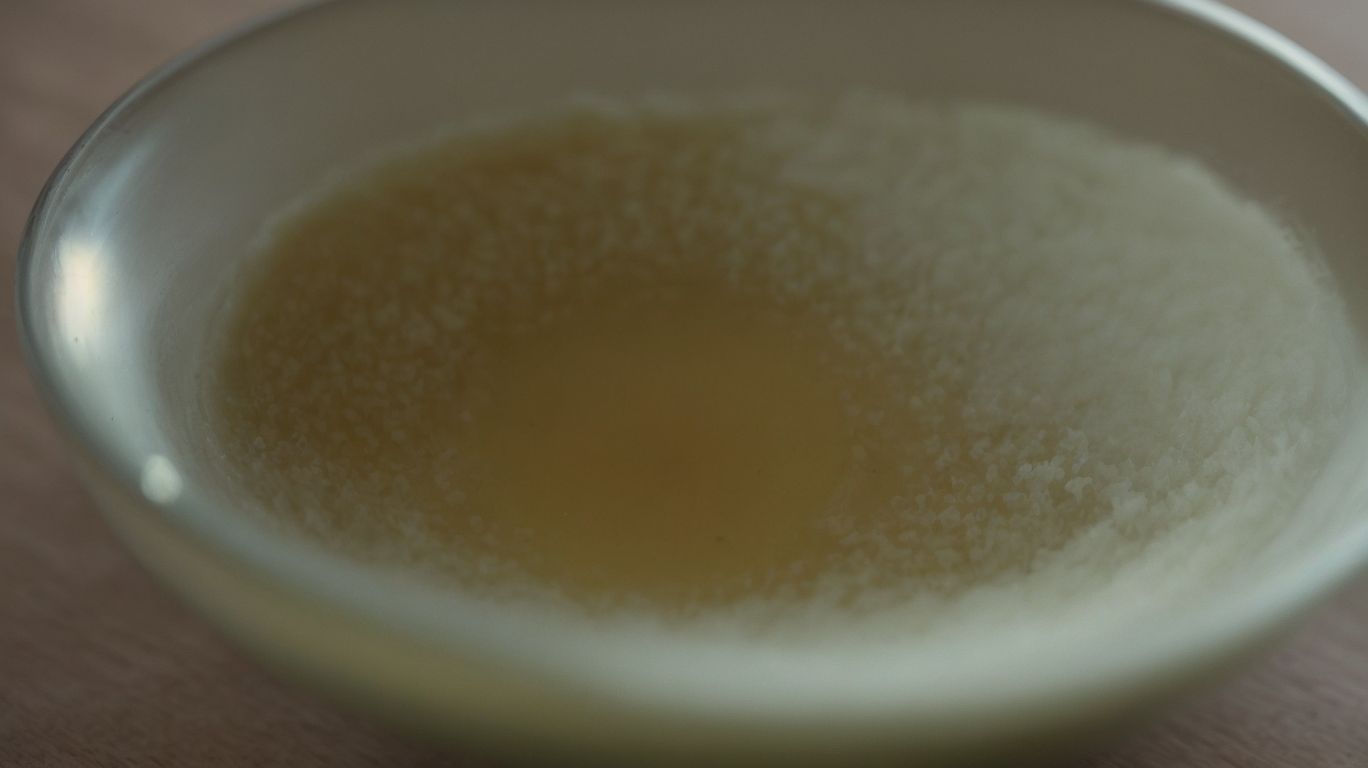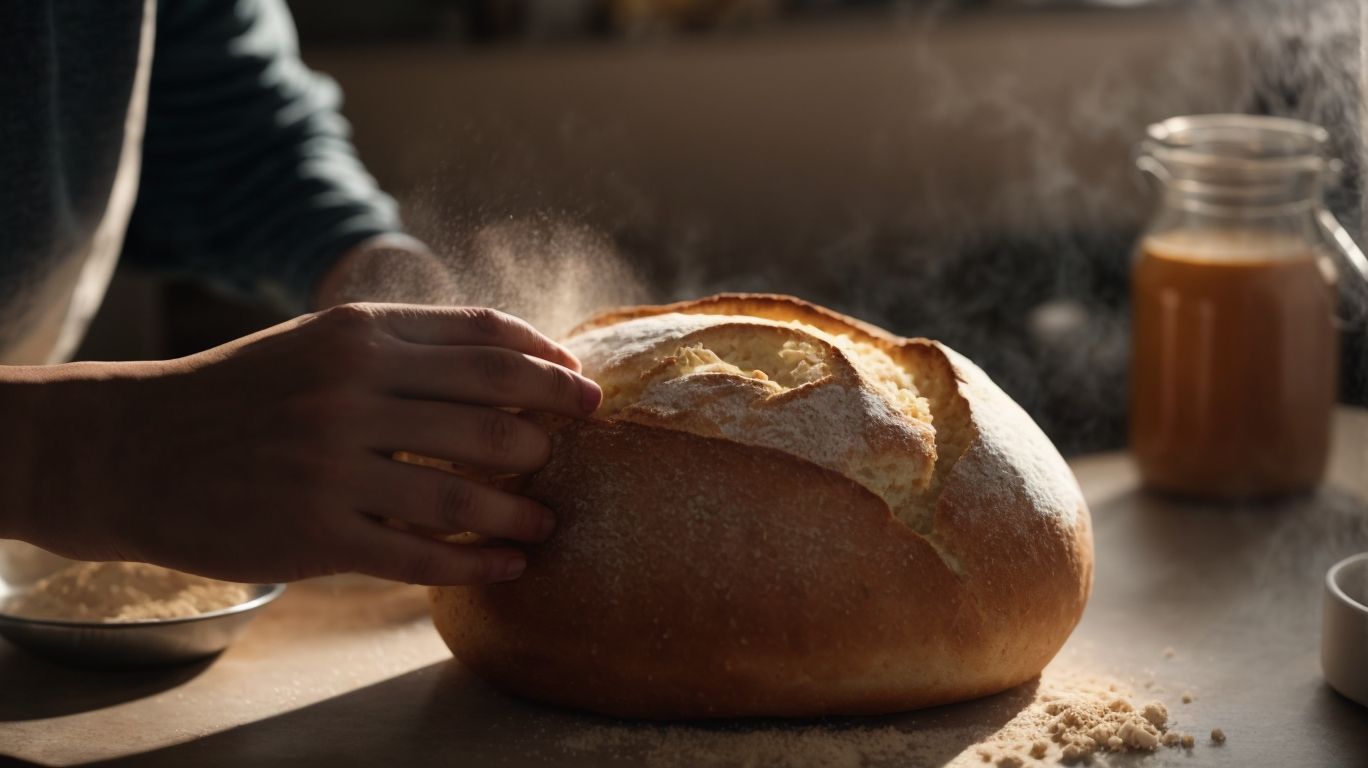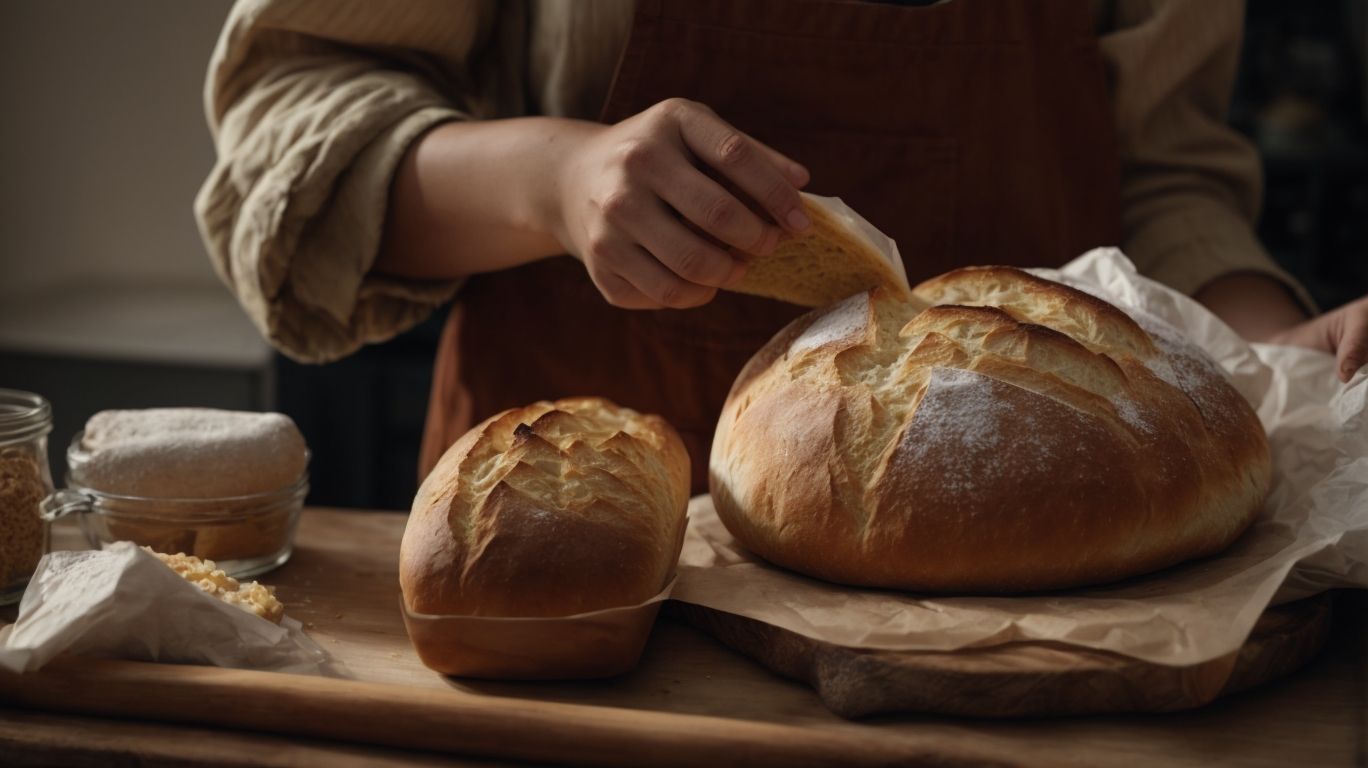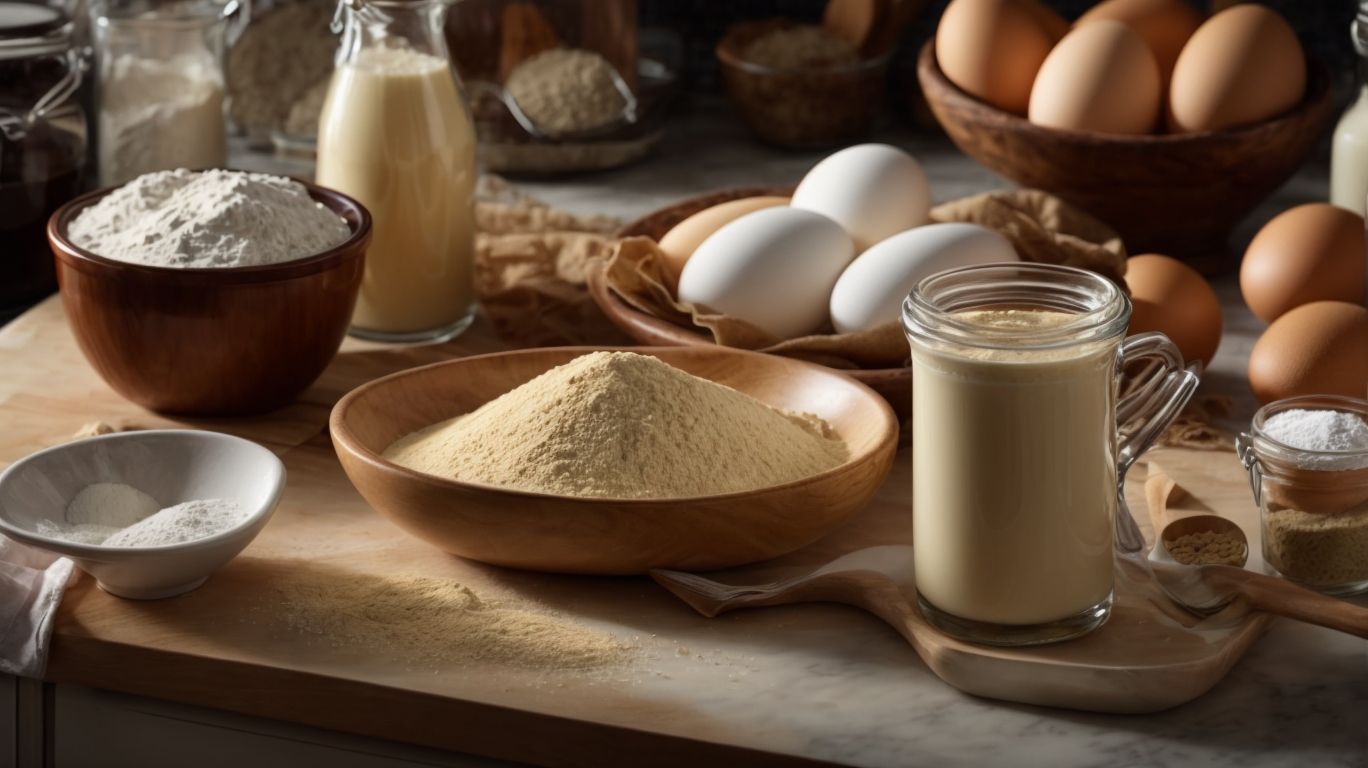How to Bake With Fresh Yeast?
Are you looking to elevate your baking game with fresh yeast but not sure where to start?
We delve into everything you need to know about using fresh yeast in your baking endeavors. From understanding the differences between fresh and dry yeast to learning how to store and activate fresh yeast, we’ve got you covered.
Whether you’re a seasoned baker or just starting out, we’ll provide you with tips, tricks, and troubleshooting advice to ensure your baked goods turn out perfect every time.
So, let’s get started on your journey to delicious, freshly baked treats!
Key Takeaways:
About Fresh Yeast

Credits: Poormet.Com – Michael Williams
Fresh Yeast plays a crucial role in baking, providing the essential fermentation power needed for bread-making and other recipes. It is a living organism known as Saccharomyces cerevisiae that interacts with flour, water, and sugar to create the dough.
When Fresh Yeast is added to the mixture, it consumes sugars in the dough and produces carbon dioxide gas, which helps the dough rise and gives the bread its soft and airy texture. This process is essential for developing the flavor and structure of the bread. The active yeast cells feed on the sugars, releasing alcohol and carbon dioxide in the process.
What is Fresh Yeast?
Fresh Yeast, also known as Saccharomyces cerevisiae, is a living organism crucial for fermentation in baking. It is commonly used in bread-making and various recipes to leaven the dough and create the desired texture and flavor.
This type of yeast is a single-celled fungus that converts sugars into carbon dioxide and alcohol through fermentation. When added to dough, it helps the dough rise by producing carbon dioxide gas, which gets trapped in the gluten network of the bread, resulting in the airy texture we love.
Saccharomyces cerevisiae is particularly adept at breaking down glucose and producing ethanol – which gives bread not only its fluffy texture but also its distinct aroma and taste.
How is Fresh Yeast Different from Dry Yeast?
Fresh Yeast differs from Dry Yeast in its moisture content and activation process. Unlike Dry Yeast, Fresh Yeast requires refrigeration due to its high moisture levels and needs to be activated in warm liquid before use in baking.
In terms of storage, Dry Yeast is much more convenient as it can be kept at room temperature, whereas Fresh Yeast’s high moisture content makes it susceptible to spoilage if not stored properly.
- Another notable difference is the method of activation; Fresh Yeast needs to be dissolved in warm water or milk to “wake up” its fermentation process, while Dry Yeast can be directly added to the dry ingredients in the recipe.
- Despite the required extra steps, Fresh Yeast is preferred by many bakers for its ability to impart a more pronounced flavor and enhance the texture of breads and pastries.
Using Fresh Yeast also poses some challenges, such as shorter shelf life and the need for more precise measurements due to its varying moisture content compared to the standardized Dry Yeast. Ultimately, the choice between Fresh Yeast and Dry Yeast depends on personal preference, baking style, and the desired outcome of the final baked goods.
How to Store Fresh Yeast?
Proper storage of Fresh Yeast is essential to maintain its viability and effectiveness in baking. Store Fresh Yeast in the refrigerator to extend its shelf life, ensuring it remains active and ready for use in various quantities as needed.
When storing Fresh Yeast in the refrigerator, it is important to keep it in an airtight container to prevent moisture from affecting its potency. Storing yeast in the back of the refrigerator where temperatures are more stable can further enhance its longevity.
- Remember to check the expiration date on the yeast package and prioritize using the oldest yeast first to maintain freshness.
- When measuring yeast quantities for recipes, always use a kitchen scale for accuracy rather than relying on volume measurements. This ensures consistent results in your baking endeavors.
How to Use Fresh Yeast in Baking?

Credits: Poormet.Com – Thomas Hill
Utilizing Fresh Yeast in baking requires proper activation and incorporation into the dough.
Activating Fresh Yeast in warm liquid plays a crucial role in ensuring its effectiveness in the baking process. By dissolving the yeast in tepid water or milk, you awaken its dormant state, initiating the fermentation process. This activation step jumpstarts the yeast’s ability to interact with the sugars in the dough, producing carbon dioxide gas which causes the dough to rise.
Once activated, the Fresh Yeast can be smoothly integrated into the flour mixture. Mixing it thoroughly with the other ingredients ensures even distribution throughout the dough, allowing for consistent fermentation and rise. This dance of yeast, flour, and liquids creates a harmonious environment for the dough to develop structure and flavor.
What Are the Different Methods of Using Fresh Yeast?
There are several methods for using Fresh Yeast in baking, ranging from direct incorporation into the dough to pre-fermentation techniques that enhance flavor and texture. Experiment with different recipes and baking styles to discover the optimal method for your desired results.
One popular approach to utilizing Fresh Yeast in baking is the direct method, where the yeast is added directly to the dough mixture. This technique is straightforward and can be ideal for quick bread recipes.
On the other hand, pre-fermentation methods involve creating a starter culture with the yeast before incorporating it into the main dough, allowing for a longer fermentation process that can yield richer flavors and improved texture.
When exploring the versatility of Fresh Yeast, consider its compatibility with traditional bread-making techniques like artisan breads, sourdough loaves, and enriched doughs for pastries. The unique properties of Fresh Yeast contribute to the development of complex flavors and desired crumb structures in various baked goods.
How to Activate Fresh Yeast?
Activating Fresh Yeast is a crucial step in the baking process to ensure optimal fermentation and dough rising. Dissolve Fresh Yeast in warm liquid with a pinch of sugar and allow it to foam before incorporating it into the dough mixture for effective leavening.
Properly activating Fresh Yeast sets the foundation for a successful baking endeavor. When you dissolve the yeast in warm liquid, such as water or milk, the sugar acts as a food source for the yeast to activate and produce carbon dioxide. Allowing the mixture to foam indicates that the yeast is alive and ready to leaven the dough. This foaming process is crucial as it guarantees that the yeast is active and capable of leavening the dough effectively.
What Are the Best Recipes to Use Fresh Yeast in?
Fresh Yeast shines in recipes that require delicate flavor nuances and excellent texture, such as artisanal bread, pizza dough, and sweet pastries. Explore a variety of recipes to showcase the versatility of Fresh Yeast in creating delectable baked goods.
In terms of utilizing Fresh Yeast in artisanal bread, its ability to impart a complex flavor profile and a light, airy texture is unmatched. Incorporating Fresh Yeast into pizza dough results in a crust that strikes the perfect balance between chewy and crispy, offering a delightful eating experience.
For sweet pastries, Fresh Yeast elevates the dough, providing a subtle tanginess that complements the sweetness of fillings like fruits or custards. Whether you’re a seasoned baker or just starting, experimenting with Fresh Yeast in various recipes opens up a world of possibilities for creating mouthwatering treats.
Tips for Baking with Fresh Yeast
Mastering the art of baking with Fresh Yeast requires precision in measurement, awareness of common pitfalls to avoid, and the flexibility to substitute Fresh Yeast with Dry Yeast when needed. Enhance your baking prowess with these expert tips.
When working with Fresh Yeast, ensure that your measurements are accurate to the last gram or ounce. Even a slight deviation can impact the rise and texture of your baked goods. To prevent mistakes, double-check your measurements before adding Fresh Yeast to your dough mix.
If you find yourself out of Fresh Yeast, don’t fret! You can easily substitute it with Dry Yeast by using half the amount specified in the recipe, and making adjustments to your rising times.
How to Measure Fresh Yeast?
Accurate measurement of Fresh Yeast quantities is essential for achieving consistent baking results. Use a kitchen scale to weigh Fresh Yeast precisely according to the recipe requirements, ensuring the proper amount for optimal fermentation and dough development.
When working with Fresh Yeast in your recipes, precision is key. A slight variation in the amount of Fresh Yeast can significantly impact the final texture and flavor of your baked goods. By using a kitchen scale, you can ensure that you are adding the exact amount specified in the recipe, avoiding any guesswork or estimation.
Measuring Fresh Yeast by weight rather than volume is more reliable and accurate. Fresh Yeast can be quite delicate, and its effectiveness in leavening dough depends on the precise quantity used. By weighing Fresh Yeast, you can avoid underproofing or overproofing your dough, leading to consistent and delicious results every time.
What Are the Common Mistakes to Avoid When Using Fresh Yeast?
Avoiding common mistakes when working with Fresh Yeast is crucial for successful baking outcomes.
Common errors can often ruin your baked goods, so it’s essential to steer clear of these pitfalls. If you use expired yeast, your dough won’t rise properly, affecting the texture and taste of your final product. Improper storage, such as exposing yeast to heat or humidity, can lead to its deterioration. Activation techniques are also paramount; insufficient proofing time or using water that’s too hot or cold can hinder yeast activity.
How to Substitute Fresh Yeast with Dry Yeast?
When in need of a Fresh Yeast alternative, Dry Yeast can step in to fulfill the leavening requirements for your baking endeavors. Follow specific conversion ratios and activation procedures to seamlessly substitute Dry Yeast for Fresh Yeast in your favorite recipes.
Understanding the conversion ratio is crucial when making the switch from Fresh Yeast to Dry Yeast. Typically, you will need about half the amount of Dry Yeast compared to Fresh Yeast in a recipe. For example, if a recipe calls for 15g of Fresh Yeast, you would use roughly 7g of Dry Yeast.
- When activating Dry Yeast, it is essential to rehydrate it properly. To do this, dissolve the Dry Yeast in a small quantity of warm water or milk along with a pinch of sugar. Let it sit for around 5-10 minutes until it becomes foamy and starts to bubble, indicating that the yeast is alive and ready for use.
By following these simple steps and adjustments, you can seamlessly incorporate Dry Yeast as a substitute for Fresh Yeast in your baking preparations, ensuring your final product turns out just as delicious and perfectly risen!
Troubleshooting Common Issues with Fresh Yeast

Credits: Poormet.Com – Tyler Rivera
Encountering challenges with Fresh Yeast is not uncommon in baking. If the dough doesn’t rise as expected or the bread tastes overly yeasty, it might indicate issues with yeast activation, storage, or freshness. Learn how to identify and address these common problems for successful baking outcomes.
One of the common culprits for inactive yeast is using water that is too hot or too cold when activating it. The ideal temperature range is between 100-110°F to ensure proper activation. If the yeast doesn’t froth or bubble after a few minutes, it may be necessary to start over with fresh yeast. Storing yeast in a cool, dark place like the refrigerator can extend its shelf life and maintain its potency. Always check the expiration date before use to avoid disappointing results in your baked goods.
What to Do If the Dough Doesn’t Rise?
When faced with unrisen dough during baking, analyze potential causes like ineffective yeast activation, unsuitable environmental conditions, or expired yeast. Implement corrective measures to salvage the dough and achieve the desired rise for your baked goods.
One common reason for dough not rising is using water that’s too hot or too cold, which can affect yeast activity. Yeast thrives in warm, but not hot, environments to activate properly. Outdated yeast can lose potency, leading to poor rising results. Ensure your yeast is fresh and within its expiration date for optimal performance.
Check the humidity in your kitchen, as excessively dry or humid conditions can hinder dough from rising. By maintaining ideal temperature and moisture levels, you can create a conducive environment for the yeast to work its magic and elevate your baking endeavors.
What to Do If the Bread Tastes Yeasty?
If your bread exhibits an overly yeasty flavor, investigate potential causes like excessive yeast usage, prolonged fermentation, or improper storage. Follow remedial actions to balance the yeast impact and enhance the bread’s taste profile for a more enjoyable baking experience.
Excessive yeast usage can lead to a strong yeasty taste in your bread, overpowering other flavors.
Allowing the dough to ferment for too long can intensify the yeastiness, affecting the overall taste negatively. It’s crucial to maintain the right balance of yeast for optimal flavor.
Improper storage conditions, such as humidity or warmth, can also contribute to a more pronounced yeast flavor.
How to Tell If Fresh Yeast Has Expired?
Detecting expired Fresh Yeast is crucial for maintaining baking quality and outcomes. Look for signs such as a lack of foaming during activation, diminished rise in dough, or an off odor indicating yeast deterioration. Learn to recognize these indicators to ensure optimal yeast performance.
The provided text is already formatted with HTML tags for bold text (b). If you want, I can add additional formatting such as paragraph tags (
) for readability. Would you like me to do that?
Frequently Asked Questions
What is fresh yeast and how is it different from dry yeast?
Fresh yeast, also known as compressed yeast, is a live organism that is used as a leavening agent in baking. It is different from dry yeast because it is moist and must be kept refrigerated and used within a week of purchase.
Can I substitute fresh yeast for dry yeast in a recipe?
Yes, you can substitute fresh yeast for dry yeast in a recipe. However, you will need to use three times the amount of fresh yeast called for in the recipe. For example, if a recipe calls for 1 teaspoon of dry yeast, you will need to use 3 teaspoons of fresh yeast.
How do I know if my fresh yeast is still active?
To test the freshness of your yeast, dissolve a small amount in warm water with a pinch of sugar. If it begins to bubble and foam after a few minutes, it is still active and can be used in your baking. If there is no reaction, it may be expired and should not be used.
Do I need to activate fresh yeast before using it in a recipe?
No, unlike dry yeast, you do not need to activate fresh yeast before using it in a recipe. Simply crumble or cube the yeast and mix it directly into your dough or batter.
How should I store fresh yeast?
Fresh yeast must be kept refrigerated and used within a week of purchase. Make sure to store it in an airtight container to prevent it from drying out.
Can I freeze fresh yeast if I can’t use it within a week?
Yes, you can freeze fresh yeast for up to three months. Wrap it tightly in plastic wrap or place it in an airtight container before placing it in the freezer. When ready to use, thaw it in the refrigerator and use it within a week.

